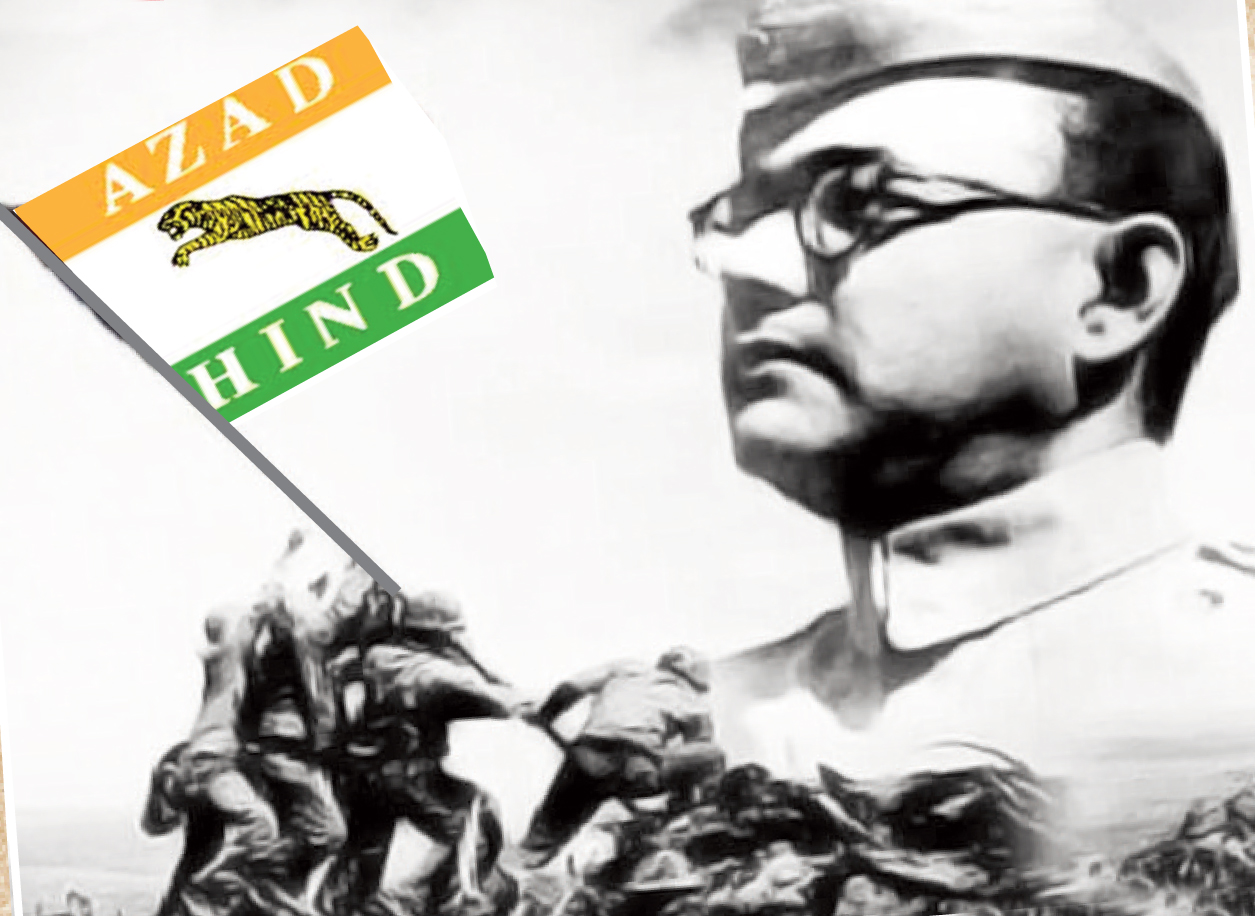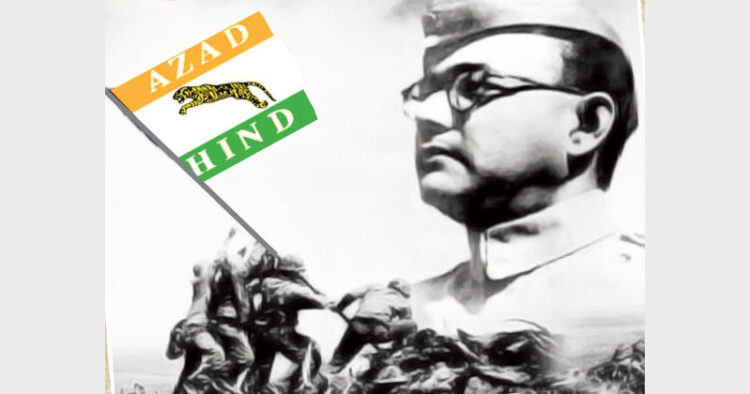 Children a large number of people sacrificed their lives to free India from the clutches of British imperialism. But it is very unfortunate that when India finally got Independence the British-styled historians didn’t consider it necessary to include their names while penning the saga of Indian war of independence. This led to writing of distorted history. They only remembered the names of those who belonged to a single family called Gandhi Family or Nehru Dynasty. History was altered in their way to match the style of a dynasty. Instead of praising the revolutionaries, the western-styled Indian historians named them as militants or terrorists.
Children a large number of people sacrificed their lives to free India from the clutches of British imperialism. But it is very unfortunate that when India finally got Independence the British-styled historians didn’t consider it necessary to include their names while penning the saga of Indian war of independence. This led to writing of distorted history. They only remembered the names of those who belonged to a single family called Gandhi Family or Nehru Dynasty. History was altered in their way to match the style of a dynasty. Instead of praising the revolutionaries, the western-styled Indian historians named them as militants or terrorists.
Children you must not be knowing that India attained first freedom on October 21, 1943. The first contribution to the Freedom Struggle came from Netaji Subhas Chandra Bose. The fact that the Independence was attained on October 21, 1943 with the contribution of 70,000 soldiers in the struggle and the martyrdom of 21,000 soldiers, have been completely forgotten as this part of the history has not been included in the books. What a great shame for Mother India?
Another true son of the soil whose name should have been written in gold in the pages of history has not been given due recognition. He was titled as “Patriot of Patriots, Prince of Patriots” by non other than Mahatma Gandhi. He was a disciple of Deshbandhu Chittaranjan Das, a staunch follower of Swami Vivekananda, one of the biggest devotee of Mata Dakshineshwar Kali, a believer of Gita, and a staunch practitioner of revolutionary activities. Can you guess the name of this person? We are talking about Netaji Subhas Chandra Bose.
The year was 1942. World War II was raging on. In Asia an aggressive and resurgent Imperial Japan was dislodging the old imperial colonial powers of Europe and was creating its own Greater East Asian sphere of influence. The Fortress of Singapore, the pride of British Empire, had fallen to the Japanese and the Imperial Japanese Navy was making deep inroads into the Eastern Indian Ocean. The fall of Singapore and the subsequent invasion of British occupied Burma brought the Axis forces within striking distance of British India. It was during these turbulent times that Subhas Chandra Bose made the famous submarine journey from Germany to Singapore. The Indian National Army was formed in Singapore and the Azad Hind Government was formed. But the Azad Hind Government remained only a Government in exile with few divisions strong volunteer Army. It had no Indian lands under its control. Subhas Chandra Bose had promised the Indian people in Singapore that by 1943 they would be hoisting Indian flag on Indian soil. A Japanese Naval force captured the Andaman Island unopposed by the British Indian Garrison. The British Garrison surrendered without a fight and all the Indian soldiers were interned and were given a choice of joining the Indian National Army, which many accepted. All the political prisoners were released from Kalapani Jail and the British soldiers and officers were jailed or sent to Burma.
The capture of Andaman and Nicobar Islands by the Japanese was an important event for the Azad Hind Government as these islands were the first Indian land to be captured by the Axis Forces. The Azad Hind Government was able to convince the Japanese leaders in handing over the Andaman and Nicobar Islands to the Azad Hind Government. In 1943 Subhas Chandra Bose landed at Port Blair aerodrome and met the Japanese Military Commander of the Island and on December 30, hoisted the National Flag of India for the first time at the Gymkhana Ground (now Netaji Stadium) in Port Blair the current capital of Andaman & Nicobar Islands. Netaji was the first Indian to reclaim a British-governed land of India. He declared the Andaman and Nicobar Islands, which used to serve as a penitentiary for the British, as the first Indian territory to be liberated from their rule.
He thus thereby fulfilled his promise of hoisting the national flag on Indian soil by 1943. Bose named Andaman Island as ‘Shaheed’ and Nicobar Island as ‘Swaraj’ and appointed INA General A D Loganathan as the Governor of the Islands. Azad Hind Government was not merely a Government in exile anymore but had its own land, own currency, civil code and stamps; it was a full fledged government of a country which was yet to be liberated from foreign yoke and in that sense the Azad Hind Government had become a national entity. Thus Andaman and Nicobar Islands became the first plot of Indian land to be liberated from British rule and played an important part in the saga of our Independence Struggle. The INA Museum stands on the spot where the Indian National Army (INA) formed by Netaji Subhas Chandra Bose, first hoisted the Indian tri-colour on sacred
Indian soil.
The Islands remained under the rule of Azad Hind governance till the end of the War when the Japanese forces surrendered and with that the Azad Hind Fauj and the Azad Hind Government were dissolved. Although the Azad Hind Fauj got dissolved but people became aware of the sacrifices of the Azad Hind Forces, forced the British to decide on leaving India by 1947. It was the legacy of the Azad Hind that precipitated the end of British rule in India and that legacy started hundreds of miles away from Indian mainland, in Andaman and Nicobar Islands or we can call them Shaheed and Swaraj Islands. According to Hindu history, the original name of these Islands is Hanu Dweep because Lord Hanuman stopped over here before going to Lanka with Sanjivani for Laxman.
If people had listened to the voices of Netaji and if Congress including Gandhi, Patel, and Nehru had supported Netaji Subhas Chandra Bose to let his INA reach Delhi, a new history of India would have been written. It would have freed India completely and gained Complete Independence instead of Dominion Status. This transfer of power not only came with Dominion Status but also with Partition of our motherland and independence to 565 princely states to decide whether to go with India or Pakistan or stay independent as a third nation.
It was Netaji who forced the British to leave India and the same was propagated by Clement Attlee who was the key figure and the then Labour Party’s British Prime
Minister when Transfer of Power
was awarded. —Aniket Raja













Comments